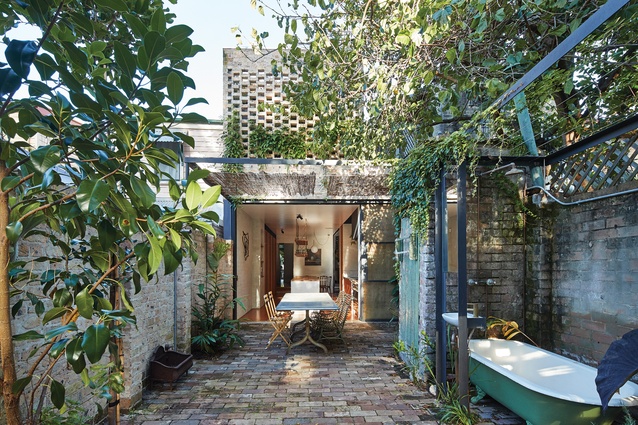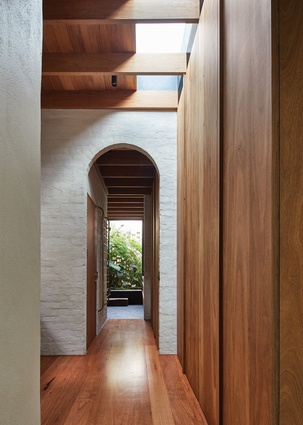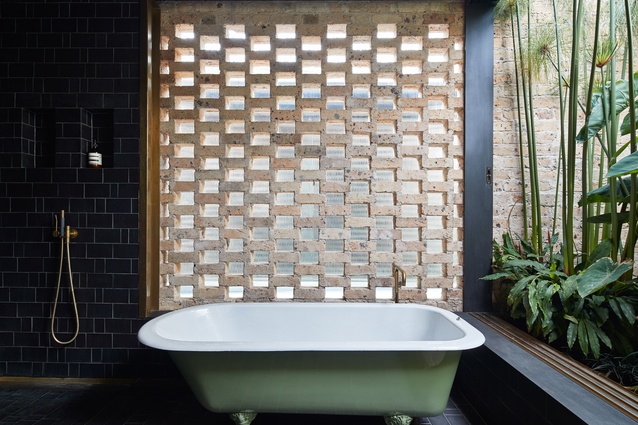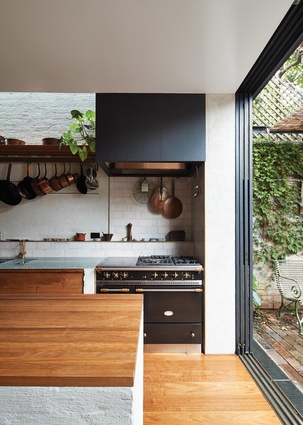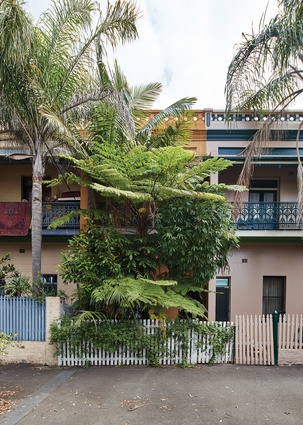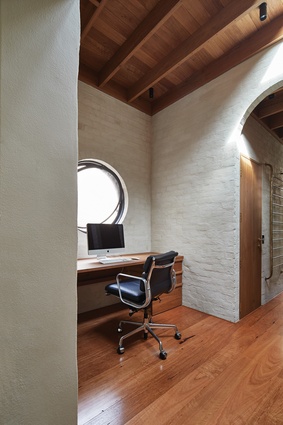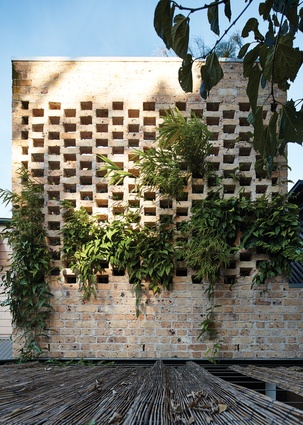An outdoor challenge: Waterloo House
A sensitive extension to a heritage-listed Sydney terrace house by Anthony Gill Architects offers generous living spaces and encourages a life lived outdoors.
Altering a house, particularly a terrace house, is seldom an all-or-no thing exercise – it’s about building on the existing architecture to cater to a contemporary lifestyle, without erasing the layers and memories of what came before it. Most of us believe that the present, and indeed the future, is ours. But it isn’t as simple as that, particularly when you’re dealing with a heritage-listed terrace that draws a lot of its strength from being a part of a whole – in this case, an unusually long, intact row of terrace houses in Sydney.
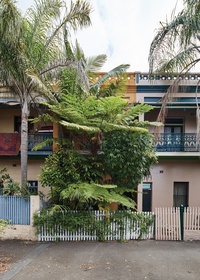
When I met architect Anthony Gill on site, he pointed out that while the street dips and rises along its length, all the upper floors of the terraces in the row sit at the same level. The height of the ground-floor rooms varies greatly from terrace to terrace, and the ones in the middle of the row have ground-floor ceiling heights of nearly four metres. It is one of these terraces that Anthony has reimagined as a contemporary house for a family of three.
The benign Sydney climate lends itself to living a life outdoors nearly all year round; however, accessing it in any meaningful way while maintaining a suitable level of privacy in a terrace less than five metres wide posed quite a challenge.
Heritage constraints meant that the front rooms of the terrace were essentially left alone, while the rear wing of the house, along with the rejuvenated rear courtyard, was reassembled as a contemporary counterpoint that is mindful of the climactic opportunity in a way that the original Victorian terraces weren’t. Together, these old and new components combine in consonance to become an inspired set of contemporary living spaces.
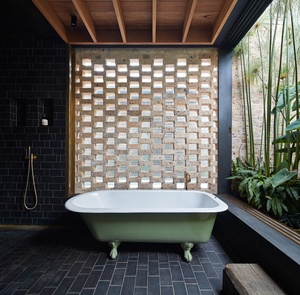
The small backyard has been reconfigured as a pair of spaces within one. The first half of the yard, immediately adjacent to the house, is configured as an outdoor dining/sitting area. The original outhouse, sitting about halfway along the length of the yard, serves as a kind of threshold point to a new outdoor bathroom featuring the original loo, which screens the rest of the house from a shower/bath area complete with a steel-framed basin and mirror vanity.
The rear wing of the terrace has been reimagined in recycled brick. New dining and kitchen spaces are located on the ground level, the former opening out onto a small brick-lined courtyard that also serves the sitting room in the main section of the terrace.
All the interior walls are made from painted bagged brickwork, the texture of these surfaces acting as a material ligature between the robust external finish of the recycled brickwork and the finer interior elements: joinery components of recycled hardwood, brass, tiles and terrazzo.
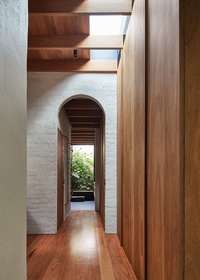
A moulded timber profile inspired by furniture seen by the client during a recent trip to Japan and the bespoke brass metalwork assembled to form the shelving cradle over the kitchen bench are just two of a series of sensitive details that complement the more robust masonry elements forming the chassis of the house.
A preference to avoid using steel lintels led to the creation of an arched doorway, designed to sit in conversation with the circular pivot window that focuses light into the study, a small room at the top of the stairs generously lit from three sides.
That arch serves as a portal into a wonderfully rich bathing space – lined with dark tiles and a timber ceiling, the space features an enamel claw-foot bath and opens out to a verdant garden, protected from the rear laneway by a hit-and-miss recycled brick screen that simultaneously provides privacy and natural light to the bathroom.
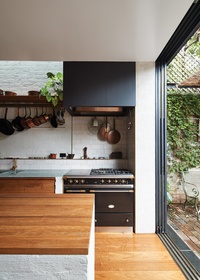
Externally the patterned brick permeates the solidity of the masonry form, allowing the strength of an honest brick building to be read while creating subtle shifts in light across the surface that negate any tendency to be overbearing. The result is a built form that is both tough and light, the planting adding a touch of unexpected lusciousness to the overall building composition.
The diversity of spaces in this house – indoor rooms, outdoor spaces and those in between – create a robust conversation about what this house was, as well as what it would like to become. As the suburb the house sits in undergoes change, so too does our idea of what a contemporary house should be.
The surety and safety that a home provides should ideally be tempered with generosity and wonder. Anthony Gill has managed to do this, and in doing so has put forward an example of how we can protect and reinterpret our built heritage, and adapt it sensitively and creatively for the future.
This article was first published in ArchitectureAU.com.

